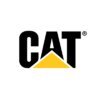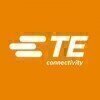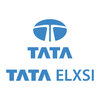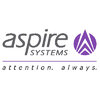Engineer
100+ Engineer Interview Questions and Answers for Freshers

Asked in Comviva Technology

Q. Divide a trapezium into 4 equal parts of the same shape, where one of the non-parallel sides is perpendicular to the parallel sides.
Divide a trapezium into 4 equal parts of the same shape using geometric methods.
Identify the trapezium's dimensions and angles.
Divide the height of the trapezium into four equal segments.
Draw horizontal lines at each segment to create four smaller trapeziums.
Ensure each smaller trapezium has the same area as the others.

Asked in Analog Devices

Q. Draw a state diagram to find the pattern 1011. Is overlap allowed? If there are 1000 states, we represent them using 10 bits. If 'P' power is consumed when the system moves from State 0 to State 1 (only 1 bit i...
read moreAnalyzing power consumption in state transitions with bit flips in a state diagram.
State diagram for pattern 1011 can be constructed with states representing each bit configuration.
If overlap is allowed, transitions can occur through intermediate states, reducing power consumption.
Transition from State 0 (0000000000) to State 1 (0000000001) consumes P power due to 1 bit flip.
Transition from State 1024 (1111111111) to State 0 (0000000000) flips all 10 bits, consuming more than...read more

Asked in Comviva Technology

Q. What is inheritance? Demonstrate it with code in any language.
Inheritance is a mechanism in OOP where a new class is derived from an existing class.
Allows for code reusability and saves time
Derived class inherits properties and methods of base class
Can override base class methods in derived class
Can have multiple levels of inheritance
Example: class Dog extends Animal {}

Asked in Comviva Technology

Q. What is normalization? What do you mean by 1NF, 2NF, 3NF, 4NF?
Normalization is the process of organizing data in a database to reduce redundancy and dependency.
1NF (First Normal Form) - Each column in a table must have atomic values.
2NF (Second Normal Form) - A table must be in 1NF and all non-key attributes must be dependent on the primary key.
3NF (Third Normal Form) - A table must be in 2NF and all non-key attributes must be independent of each other.
4NF (Fourth Normal Form) - A table must be in 3NF and have no multi-valued dependenci...read more

Asked in Analog Devices

Q. Timing analysis of Sequential and combinational logic: Definition of Setup time. How does it affect the system. Find the minimum clock frequency given Tcq, delay of all the gates, Tsu, Thold
Setup time is the minimum time required for the input signal to be stable before the clock edge arrives.
Setup time is a critical parameter in timing analysis of sequential and combinational logic.
It affects the system by ensuring that the input signal is stable before the clock edge arrives, preventing errors in the output.
The minimum clock frequency can be calculated using the formula: Fmin = 1 / (Tcq + Tsu + Thold), where Tcq is the maximum clock-to-output delay of any gate...read more

Asked in Megha Engineering & Infrastructures

Q. How many types of oils are used in construction machinery?
Construction machinery uses various types of oils depending on their functions.
There are different types of oils used in construction machinery such as engine oil, hydraulic oil, gear oil, transmission oil, and brake oil.
Engine oil is used to lubricate the engine and prevent wear and tear.
Hydraulic oil is used to transfer power in hydraulic systems.
Gear oil is used to lubricate gears and bearings in gearboxes.
Transmission oil is used to lubricate the transmission system.
Brake...read more
Engineer Jobs




Asked in Analog Devices

Q. If the clock frequency is higher than expected due to fabrication variations, how would you handle that situation?
Managing excessive clock frequency involves techniques like frequency scaling and circuit adjustments to ensure stability.
Implement dynamic frequency scaling to adjust the clock speed based on workload demands.
Use phase-locked loops (PLLs) to stabilize and control the clock frequency.
Incorporate voltage scaling to reduce power consumption and heat generation at higher frequencies.
Design circuits with built-in tolerance for frequency variations, such as using metastability-res...read more

Asked in Comviva Technology

Q. Describe the OOPs concepts with code examples.
OOP concepts include encapsulation, inheritance, polymorphism, and abstraction, essential for structured programming.
Encapsulation: Bundling data and methods. Example: class `Car` with properties like `speed` and methods like `accelerate()`.
Inheritance: Deriving new classes from existing ones. Example: `class SportsCar(Car)` inherits properties and methods from `Car`.
Polymorphism: Using a single interface to represent different data types. Example: method `drive()` can be use...read more
Share interview questions and help millions of jobseekers 🌟


Asked in Comviva Technology

Q. Write some SQL queries for the given relations.
SQL queries can be written to manipulate and retrieve data from two related tables.
Use JOIN to combine data from both tables. Example: SELECT * FROM table1 JOIN table2 ON table1.id = table2.foreign_id;
Use WHERE clause to filter results. Example: SELECT * FROM table1 WHERE condition;
Use GROUP BY to aggregate data. Example: SELECT column, COUNT(*) FROM table1 GROUP BY column;
Use INSERT to add new records. Example: INSERT INTO table1 (column1, column2) VALUES (value1, value2);
Us...read more

Asked in Tata Elxsi

Q. What are OOPS Concepts? Explain them.
OOPS Concepts are the principles of Object-Oriented Programming that help in designing and implementing software systems.
Abstraction: Hiding the implementation details and showing only the necessary information.
Encapsulation: Binding data and functions together to protect data from outside interference.
Inheritance: Creating new classes from existing ones, inheriting properties and methods.
Polymorphism: Ability of objects to take on multiple forms or behaviors.
Example: A car i...read more

Asked in Analog Devices

Q. Implement the following logic using MUX and multiplier gates: If A, then F = D * E; otherwise, F = G * H.
Implement code using MUX and multiplier gates for conditional assignment
Use a 2:1 MUX to select between D*E and G*H based on A
Use a multiplier gate to calculate D*E and G*H
Connect the output of the MUX to the input of the multiplier gate
Ensure proper sizing of gates to meet design requirements

Asked in Megha Engineering & Infrastructures

Q. What are the daily maintenance schedules for the machinery?
Daily maintenance schedules of machineries
Check oil levels and top up if necessary
Inspect and clean filters
Check for any signs of wear and tear
Lubricate moving parts
Check for any leaks or unusual noises
Perform any necessary repairs or replacements
Keep a record of maintenance performed

Asked in Renom Energy Services

Q. How does the Pitch system work with the entire process? Please provide a diagram.
The pitch system in engineering controls the angle of the blades on a wind turbine or aircraft to optimize performance.
Pitch system adjusts blade angle to control speed and power output
Can be controlled manually or automatically based on wind conditions
Diagram should show blades connected to pitch system and control mechanism

Asked in ElasticRun

Q. How do I manage and debug threads and workers in Python?
To manage and debug threads and workers in Python, use built-in modules like threading and multiprocessing, and tools like logging and debugging libraries.
Use the 'threading' module for managing threads in Python
Use the 'multiprocessing' module for managing worker processes
Utilize tools like logging to track the execution flow of threads and workers
Use debugging libraries like 'pdb' or 'pydev' for debugging threads and workers
Ensure proper synchronization and communication be...read more

Asked in L&T Construction

Q. What is steel?
Steel is a metal alloy made primarily of iron and carbon.
Steel is known for its strength, durability, and versatility.
It is used in construction, manufacturing, transportation, and many other industries.
Different types of steel can be created by varying the amount of carbon and other elements added to the alloy.
Stainless steel, for example, contains chromium and nickel to resist corrosion.
High-strength low-alloy steel (HSLA) contains small amounts of alloying elements to incr...read more

Asked in Renom Energy Services

Q. How is power converted and matched to grid parameters?
Power can be converted and matched to grid parameters using power converters and control systems.
Use power converters such as inverters to convert power from DC to AC or vice versa.
Implement control systems to ensure the converted power matches the grid parameters.
Adjust parameters such as voltage, frequency, and phase angle to match the grid requirements.
Utilize communication protocols like Modbus or DNP3 for grid integration.
Perform testing and validation to ensure complian...read more

Asked in Tata Elxsi

Q. How do you generate C code in MATLAB?
C code can be generated in MATLAB using the MATLAB Coder app or by using the 'codegen' function.
MATLAB Coder app allows users to generate C code from MATLAB code
The 'codegen' function can be used to generate C code programmatically
Generated C code can be optimized for specific hardware platforms
C code can be integrated with other programming languages or software tools
Example: codegen myFunction -args {arg1,arg2} -config:lib -report

Asked in Applied Micro Circuits Corporation

Q. What are virtual functions?, What are access modifiers?
Virtual functions are functions that can be overridden in derived classes. Access modifiers control the visibility and accessibility of class members.
Virtual functions allow a derived class to provide its own implementation of a function defined in the base class.
Access modifiers include public, private, and protected, and determine the accessibility of class members.
Public members are accessible from anywhere, private members are only accessible within the class, and protect...read more

Asked in ElasticRun

Q. What data structures and coding standards did you follow or implement?
I implemented data structures like arrays, linked lists, and trees. Followed coding standards like naming conventions and code documentation.
Implemented arrays for efficient storage and access of data
Utilized linked lists for dynamic memory allocation and insertion/deletion operations
Implemented trees for hierarchical data representation
Followed naming conventions like camelCase for variables and functions
Documented code using comments for better readability and maintainabili...read more

Asked in Renom Energy Services

Q. I am from Gearless technology. 1. How Pitch system will work?
The Pitch system in Gearless technology controls the angle of the blades to optimize energy production.
Pitch system adjusts the angle of the blades based on wind conditions to maximize energy output.
It helps in protecting the turbine from damage during high wind speeds by adjusting the blade angle.
Pitch system can be controlled manually or automatically depending on the turbine design.
Examples of Pitch system in action can be seen in wind turbines where the blades adjust thei...read more

Asked in VVDN Technologies

Q. What is the difference between a structure and an array?
Structure is a user-defined data type that can hold different types of data, while an array is a collection of similar data types stored in contiguous memory locations.
Structure can hold different types of data, while array can only hold one type of data.
In a structure, you can define multiple variables of different data types, while in an array, all elements must be of the same data type.
Example: struct Person { string name; int age; }; vs int numbers[5];

Asked in Megha Engineering & Infrastructures

Q. What are the reasons for engine failure?
Engine failure can be caused by various factors such as overheating, lack of maintenance, wear and tear, and manufacturing defects.
Overheating due to lack of coolant or oil
Lack of maintenance such as not changing oil or air filters
Wear and tear of engine components such as pistons, bearings, and valves
Manufacturing defects such as faulty parts or poor assembly
Fuel contamination or incorrect fuel usage
Improper installation or repairs
Environmental factors such as water or debri...read more

Asked in Honda India Power Products

Q. What factors are included during product costing?
Factors included in product costing include materials, labor, overhead, and profit margin.
Materials: Cost of raw materials used in production
Labor: Cost of labor required to manufacture the product
Overhead: Indirect costs such as utilities, rent, and depreciation
Profit Margin: Amount added to cover company's profit
Example: If a company produces a chair, factors like wood for materials, labor for assembly, factory rent for overhead, and profit margin would be included in produ...read more

Asked in Alcove Realty

Q. How much binding wire is required to bind 1 metric ton of steel if the diameter of the bar ranges between 20 mm to 32 mm?
Approximately 10 kg of binding wire is required to bind 1MT of steel bars ranging from 20 mm to 32 mm in diameter.
Approximately 10 kg of binding wire is needed for 1MT of steel bars with diameters between 20 mm to 32 mm.
The amount of binding wire required may vary slightly based on the specific dimensions and spacing of the bars.
It is important to ensure proper binding to maintain structural integrity and safety.

Asked in JSW Bhushan Power & Steel

Q. What is the density of carbon steel?
The density of carbon steel is approximately 7.85 grams per cubic centimeter.
The density of carbon steel is commonly measured in grams per cubic centimeter (g/cm³).
The density of carbon steel can vary slightly depending on the specific composition and heat treatment.
For example, the density of low carbon steel is typically around 7.85 g/cm³.
Higher carbon steels may have slightly higher densities.
Density is an important property to consider in engineering applications, as it a...read more

Asked in Klenzaids

Q. What are the different blocks in Siemens Programming?
Different blocks in Siemens Programming include organization blocks, function blocks, data blocks, and system blocks.
Organization blocks are used for structuring the program and include OB, FB, FC, and DB blocks.
Function blocks contain the actual logic of the program and can be created using the Function Block Diagram (FBD) language.
Data blocks store data and can be accessed by multiple function blocks.
System blocks are used for system-related functions such as time managemen...read more

Asked in Aspire Systems

Q. Oops Concepts in JAVA and SQL queries
Oops Concepts in JAVA and SQL queries
Object-oriented programming concepts in Java, such as inheritance, polymorphism, encapsulation, and abstraction
SQL queries for data manipulation, retrieval, and management in relational databases
Understanding of primary keys, foreign keys, joins, subqueries, and indexing in SQL

Asked in Tata Elxsi

Q. What is Model-in-the-Loop (MIL) testing?
Model in Loop is a simulation technique where a physical system is connected to a computer model for testing and validation.
Model in Loop (MiL) is a part of the V-Model of software development.
It involves connecting a physical system to a computer model to test and validate the model.
MiL is used in various industries such as automotive, aerospace, and defense.
It helps in identifying and fixing errors in the model before implementing it in the physical system.
Examples of MiL i...read more

Asked in Cipla

Q. What is gear what is two stoke and for stoke engine
Gears are mechanical components that transmit power and motion between rotating shafts. Two-stroke and four-stroke engines are types of internal combustion engines.
Gears are used to change the speed, torque, and direction of power transmission.
Two-stroke engines have a simpler design and are lighter than four-stroke engines.
Four-stroke engines are more fuel-efficient and produce less pollution than two-stroke engines.
Both types of engines use a piston to compress fuel and air...read more

Asked in Coal India

Q. Why are sharp corners avoided in casting?
Sharp corners are avoided in casting to prevent stress concentration and improve the overall strength and quality of the casting.
Sharp corners can lead to stress concentration, which can cause cracks or failure in the casting.
Rounded corners distribute stress more evenly, reducing the likelihood of defects.
Sharp corners can also create difficulties during the casting process, such as mold filling and solidification issues.
Examples of avoiding sharp corners include filleting o...read more
Interview Questions of Similar Designations
Interview Experiences of Popular Companies





Top Interview Questions for Engineer Related Skills



Reviews
Interviews
Salaries
Users

















